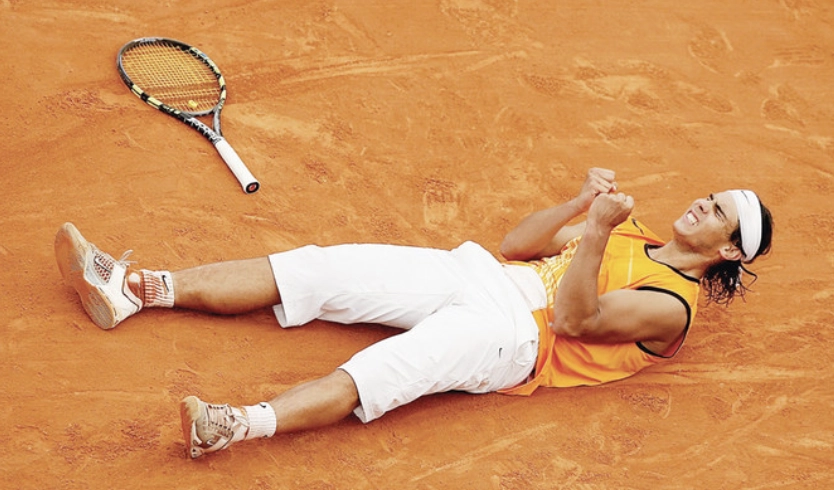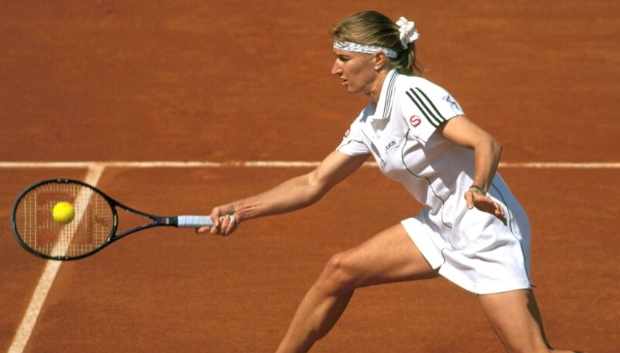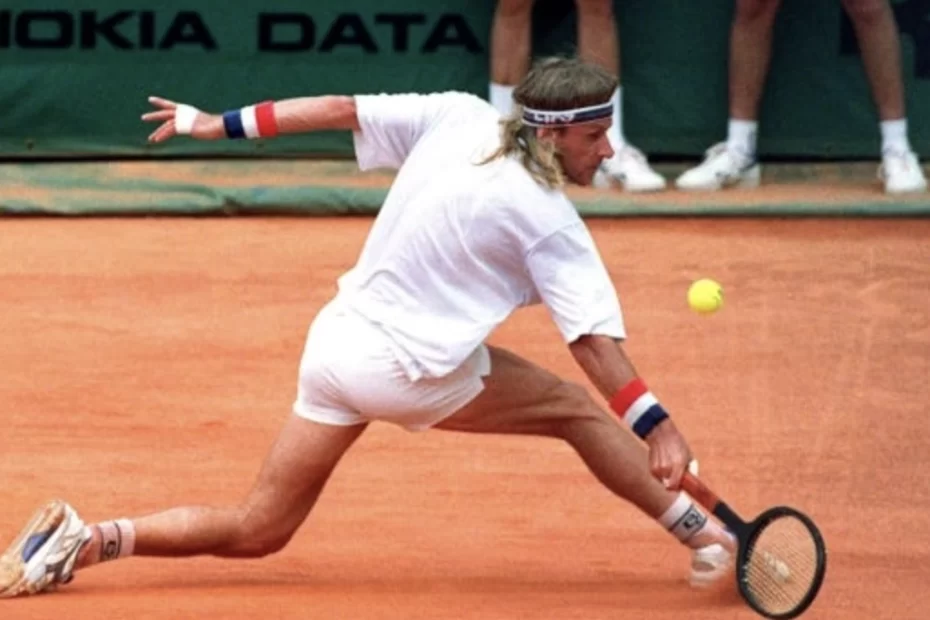The French Open, a tournament where legends are made. The clay court of Roland Garros has witnessed some of the most iconic moments in tennis, and will continue to do so. Let’s look at some of the best tennis players to ever succeed here.
From Bjorn Borg’s dominance in the late ’70s to Rafael Nadal’s historical times, the French Open usually enver disappoints. It’s a tournament that demands not just skill, but a relentless will to win. It’s time to revisit the legendary exploits of the greatest players in French Open history.
Understanding the French Open
A deep dive into the world of the French Open unveils an exciting journey of one of the four Grand Slam tournaments that develops the special relationship between tennis enthusiasts and the Parisian red-clay Stade Roland Garros. Firstly, it is important to realize the unique nature of the French Open – the lush red-clay surface. In contrast to the grass-friendly Wimbledon or the decisiveness of the US Open, the Roland Garros offers courts with one-of-a-kind-features. It slows the ball and creates high-bounce, thus demanding a player’s physical and mental stamina to stand against a competitor for multiple hours. Technique is key effective in this tournament. Players often use topspin, a specific stroke that creates an unprecedented height of a ball bounce.
The winner of French Open Gustavo Kuerten and his famous topspin is the best evidence for this statement. Moreover, the French Open’s legacy million a year in May-June influences a participant’s performance. Spring in Europe tends to be rainy, and sudden showers may damage the gameplay as the court gets heavy, and balls become difficult to hit.
Finally, the most explicit displayed energy of the oldest Grand Slam is transmitted from the spectators’ stands. The most fanatic fans – the Parisians – visit the 15,225-sit capacity Centre Court Philippe to witness all of the magic. Demonstrating passionate adrenaline, energy fills the players with power and energy and can undeniably be seen in 1983 with Yannick Noah’s victory and challenging technique of sarcasm back-hand.
However, understanding the French Open is not only acknowledging great players or thrilling games but its unique nature. People acknowledge the tournament is about fighting personal limitations more than the tough conditions and how the can outlive them got the touch of human mental determination to them.
The Dominance of Rafael Nadal
Winning a record 13 times Rafael Nadal record in French Open makes him the greatest player in the French Open. Nadal, born in 1986 in Spain, continued his stunning dominance in Roland Garros from 2005 to 2020. The left-handed clay court amazes spectators with his ability to set a topspin-heavy shot and resilience to move from one point to another which few players do. Watch Nadal play in the court; you will notice something in this player depth of physical and mental depth.
Remarkably, he won 93.8% of his matches. No one ever wins in Roland Garros other than Nadal, with Bjorn Borg, who wins 6 trophies fewer than Nadal ever dominants Roland Garros as Nadal has done. No one can ever reach the heights of 14 victories or more. Nadal skills keep improving even in the face of strong adversaries.

Nadal holds a notable 6-0 against Swiss maestro, Roger Federer in France, displaying his exceptional clay abilities. He also leads world number one, Novak Djokovic win 7-1. In the 2020 final, he managed a four-set win over Djokovic not showing any sign of the global pandemic or altered schedule. He remained focused and never lost more than one room in a match.
Of course, Nadal’s extensive knowledge of the game and the surface enable him to deploy clay court tactics; these include aggressive topspin, smart serving, and effective shot making. Nadal also takes advantage of the mercurial nature of the red clay at Roland Garros, converting the potentially unpredictable terrain into his weapon.
Overall, all match records and impressive displays prompt the extent to which Nadal has reigned the French Open history. Nadal evolves into an unmatched clay court titan, one who sets the bar high for any player who values the sport.
Celebrating Chris Evert’s Reign
From these glimpses, celebrating Chris Evert’s reign is fair. While Nadal has currently asserted the dominance, Evert’s reign deserves applause on its own. Evert had seven titles between 1974 and 1986, establishing her as one the greatest female tennis player in the French Open history.
Evert is renowned for her baseline strokes and steady strategic gameplay; she marked a significant paradigm shift in women’s play style. Particularly, her experience in clay courts is remarkable. Because of its’ slow nature, Evert’s steady, methodical player style was unmatched in clay surfaces. Her mental toughness and consistency to outlast opponents are what granted her most of the success at Roland Garros. As Bellabarba report highlights, total player finalist in nine out of 10 attempts between 1973 and 1983 is a challenging record that evinces her competitive spirit. Evert’s winning rate in clay is 94.7%, a feat that no player, male or female, has since bettered under the Open Era.
Evert’s French Open rivalries require special attention. The prominent one was with Martina Navratilova. Their contest, which lasted over a decade, truly raised women’s tennis spectacularity and fierceness. All three French Open Finals wins of Evert over Navratilova, prove the exceptionalism of her clay game.
Finally, it is crucial to mention Evert’s achievements off the court. Her integrity, good manners, and loyalty made her a role model for aspiring tennis players all over the world. As Star college reported in 1987, “Evert, the woman who made backhand fashionable.” Consequently, in the world of spinning rallies and topspin dominion, the reign of Evert shines through French Open history. There is no other way to refer to her legacy through red clay at Roland Garros than the iconic one.
The Charisma of Björn Borg
The Swedish legend Björn Borg stole the hearts of all tennis fans and enthusiasts through his mesmerizing French Open appearances. Borg magnified to claim world power in the mid to end ’70s, and his charisma was distinct due to precision, calm, and unmatched competitiveness. As one of the all-time greats to shine on the French clay, during his career, Borg secured four successive French Open titles 1978- 1981 out of the six he altogether achieved. Driven by an emphatic backhand volley, Borg took control of the court, and the game was changing a mixture of power and precision.
It was more than power; Borg’s unparalleled agility, footwork, and fast decision-making skills separated him earning a huge fan. Additionally, his introduction of topspin was seminal. The Swede even went on to learn how to slide on the clay courts, setting up a trend for the generations to come.
His on-court monumental battles on the courts, among other stern opponents John McEnroe and Jimmy Connors, are critical moments in tennis history. The epic 1980 Wimbledon final match against John McEnroe, though not a French Open record, is a good example of his powerful focus abilities and attitudes. Borg retired too early, at just 26, but his long-term impact on the game stands out. However, after that, the game style and focus developed more on strength and durability, which made much of the strong men’s game Rafnadol and others likewise at Roland Garros.
Moreover, he was the first proper superstar of professional tennis, with his fancy sportswear making it desirable to look cool. He remained wilfully constrained and collected throughout the year of intense matches and an increasing performance schedule, making everyone love him beyond sports. Evidently, it is good for all of us to still be able to see what an effect Borg has had on his game, specifically at the French Open.
He made a major influence on tennis, not just by reshaping how tennis would be played, which makes it so suited to be a fan favorite.
The Prodigy of Justine Henin
Writing about her illustrious career that bloomed on the Parisian clay, Henin won her first Grand Slam title in the city in 2003. Spectators were left in awe as she swiftly crushed her fellow countrywoman Kim Clijsters in straight sets of 6-0, 6-4. Her ability to perform when it mattered was especially noticeable, and upon defending her title in 2005, she exhibited extreme courage in a nerve-wracking match against Mary Pierce.
Henin’s nerve was once again evident with the 2006 French Open when she successfully defended her title again, this time against Svetlana Kuznetsova. In the semifinals, she dispatched Serena Williams before defeating Ana Ivanovic for the last time to win the Roland Garros title in 2007. When compared to Rafael Nadal, Borg, and Chris Evert, for instance, she is in the same league with them.
Additional proof of her dominance is another unique achievement of being one of the very few women players to defend her title many times at the French Open. Henin’s most potent weapon indeed was her single-handed backhand, which was as beautiful as it was lethal.
If tennis had a diamond, that was what a precise but powerful one-handed backhand would look like, and she regularly hyped her opponents with brilliant backhand down the line. It, therefore, comes as no surprise that her game was orchestrated just like Borg’s. In conclusion, Justine Henin’s French Open efforts confirm her place as a tennis giant. While her game changed women’s tennis, the four-time French Open finals winner The mark also cemented her as one of the tennis greats of all time.
Prominence of Steffi Graf
Other name resonating the apex of French Open, Steffi Graf, resonates across the pages of tennis records. A German marvel, she stormed the stage of Roland Garros as well, following in the footsteps of her compatriots Rafael Nadal, Chris Evert, and other giants like Björn Borg and Justine Henin.
Steffi Graf’s tennis record, just like the previous legends, entailed the rest of her fellow competitors, intelligence, and sheer grit on the court. She won the French Open six times throughout her tenure as a professional tennis player from 1987 to 1999. That is six times when she perfected the skill of play on red-clay courts, defeated her rival opponents, and showed unbreakable strength while defending her title.

Graf was renowned for her effectiveness in executing topspin strokes, a crucial component of competitive play on clay courts due to the latter’s nature. Graf was also a speedy player, and that was the fulcrum of her need for power and firm forehand stroke while on the court. Her preferred forehand slice was also a standout element of her game, with most of her critics comparing it to that of the illustrious Borg.
The slice was her favorite technique, and it also butchered down upon her competitor’s gameplay, much like the versatile single-handed backhand was a nightmare for her rivals. However, the best thing about Graf’s record at French Open was her ability to win in the tightest situations. For instance, in 1999 after struggling with numerous injuries that led to a rapid decrease in confidence, Graf went on to win the title regardless. Her opposition in the final was Martina Hingis, who was 18 years older than her. The contest was a showcase of Graf’s spirit, and it also turned out to be her last title.
Steffi Graf is undoubtedly the embodiment of the French Open. The unmatched skill and unique playing style combined with the tremendous drive to excel mark the same qualities that can be observed in Nadal, Evert, Borg, and Henin, marking their presence in the French Open. The actress’s impressive display, not only of the competition but also of the sport in general, marks the kind of achievements to which tennis players can aspire, proving her place in the top-placed French Open players.
Other Notable Players in French Open History
Besides the claims of Graf’s powerhouse performance, it’s worthy to mention three more players who left a mark in the history of French Open – Rod Laver, Monica Seles, and Jim Courier. Firstly, Rod Laver stood as a beacon of excellence in the late 60s. Ending with the reason Singling out, Laver participated not in more than five French Open tournaments due to the Grand Slam Age Eligibility rule.
However, the Australian star won twice, in 1962 and 1969, Grand Slam Titles. Moreover, both winning runs were part of the successful Calendar-Year Grand Slam, which made Laver the second male player, alongside Don Budge, to achieve the same result twice.
Secondly, Monica Seles, the former Yugoslav World No. 1, demonstrated pure dominance throughout her French Open contests. Speaking of Seles’ outcomes, she won the Coupe Suzanne-Lenglen thrice, from 1990 to 1992. It’s worth mentioning that such an aggressive style of play and powerful double-handed forehand and backhand shots distinguished the player.
Lastly, Jim Courier started reigning on the red-clay slopes of Roland Garros in the early 90s. Concerning his victories, Courier won his players’ 1991-92 discarding the second place. Furthermore, the player’s relentlessness and skillful game building with heavy topspin groundstrokes helped him.
Lastly, his ability to adapt to the slow-paced and high-bouncing nature of clay distinguished him. The three exemplars with individual gameplay skills and achievements added up to the existing picture of the arduous French Open. Hence, the event-goers may be led to respect these three contenders as well and enjoy the contribution they made to rays the level for the rest of the Roland Garros’s leaders.
